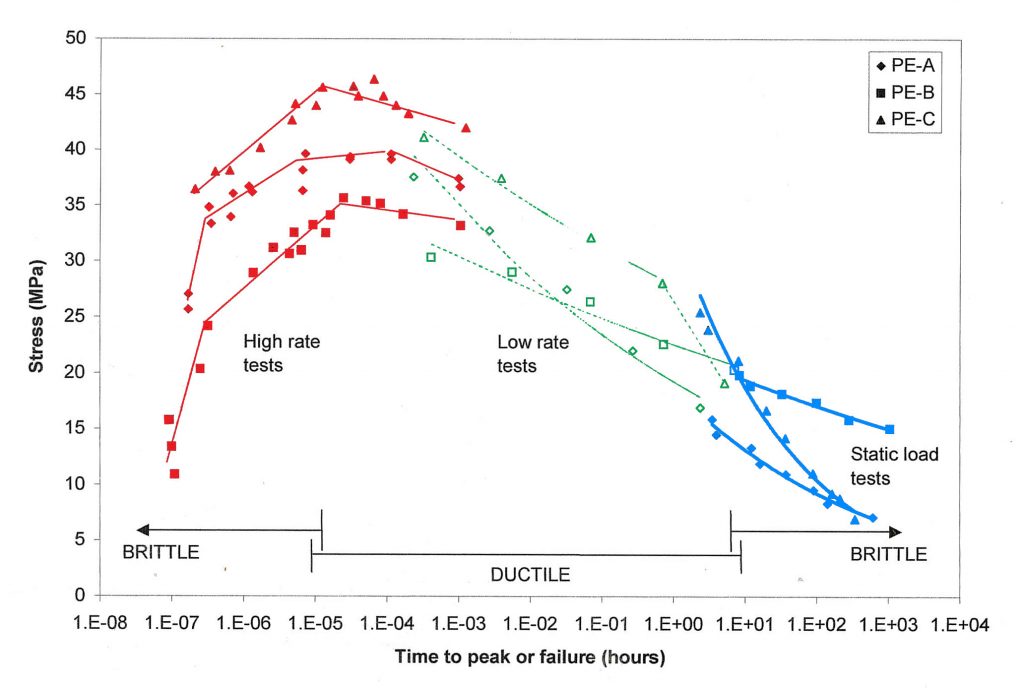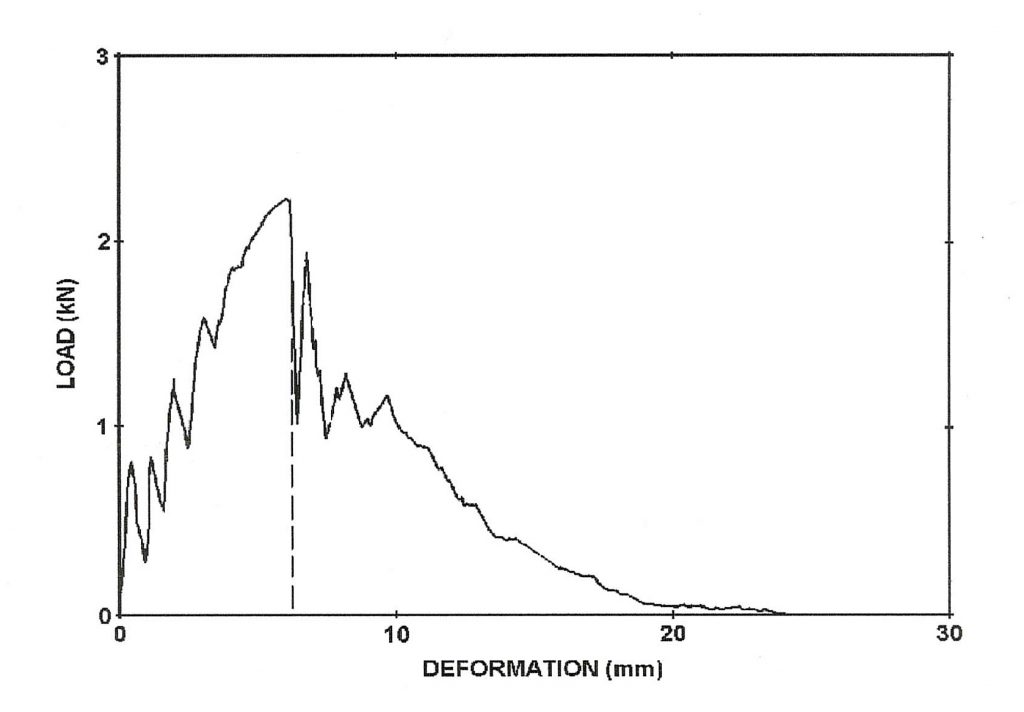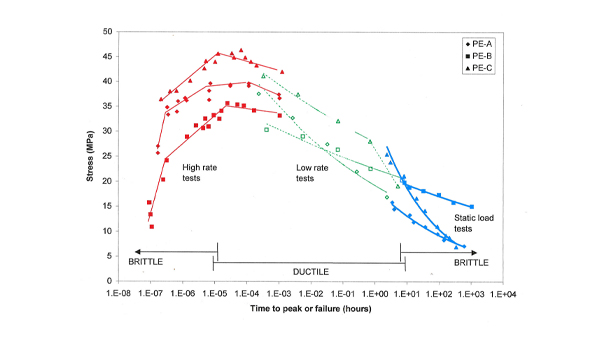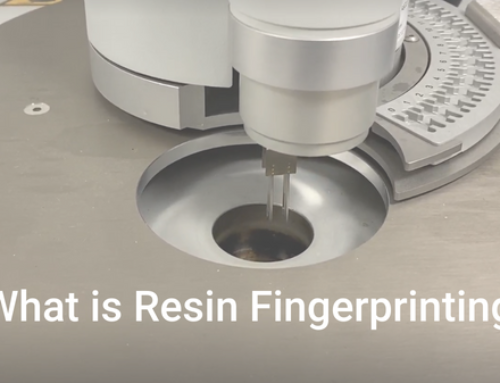Failure in polymers can vary depending on how a lot of things e.g. the type of polymer, semi-crystalline or amorphous; the temperature; speed etc.
This article discusses how failure in polymers can vary depending on factors such as the type of polymer (semi-crystalline or amorphous), temperature, and speed.
It is known that the nature of failure in a polymer can change from ductile to brittle by reducing the temperature through the brittle/ductile transition. However, it is less well known, or perhaps not often thought of in this way that when polymers are forced to fail at different strain rates they can pass through two ductile-brittle transitions one at high strain rates (impact) and one at low strain rates (slow crack growth).

Polyethylene (PE) is an example of a semi-crystalline polymer which shows this type of behaviour as illustrated in Figure 1. It shows the variation of stress at failure versus time (effectively strain rate) for three PE grades. The red curves at short times correspond to impact tests, the green curves correspond to tensile tests and the blue curves to a slow crack growth test known as Full Notch Creep Tests (FNCT).
fracture – strain rate dependence
At high impact speeds, say 3 m/s, polyethylene can be brittle. An instrumented falling weight instrument (IFWI) can measure how the load (or stress) in the sample varies as a function of displacement during impact.
A typical curve is shown in Figure2. The load or stress at the peak is the stress required to initiate breakage in a notched sample. Knowing the speed of the tup the time to the peak can be determined and is in the order of milliseconds (~10-7 hrs). Different strain rates can be varied by varying the drop height and the time to the peak stress captured.

impact – P/D measurement
Universal tensile testers tensile produce sample failure testers from typically 1m/min down to 0.001mm/min. In this region polyethylene is ductile to varying degrees and failures occur usually in the range of a few seconds to minutes (10-2h to 1h).
The lowest strain rates are achieved in static load tests e.g. FNCT where a notched sample is loaded with a specifically applied stress. Here the failures times can occur over many hours, in the example of Figure 2 from ~10h – 1000hr.
How do we explain the difference in the nature of the failures at different strain rates?
Briefly, PE is made up of long molecules which are locked into a semi-crystalline structure.
At high impact strain rates, the molecules cannot move in response to the rapid application of the force. They are essentially frozen and so the molecules fracture with little deformation to generate a brittle failure.
At intermediate strain rates, the molecules and crystal structures start to pull apart on a macroscopic scale forming a ductile failure.
At low strain rates, experienced in slow crack growth, the molecules have time to disentangle on a microscopic scale with little disruption of the molecular structure at a macroscopic level. The failure becomes brittle again.
Impact Solutions has an instrumented falling weight instrument, as well as a pendulum impact tester for Izod and Charpy tests, universal tensile tester and Full Notch Creep Testing stations to allow measurement of failures at most strain rates.
For further information on any of the tests mentioned for failure in polymers or for our full range of testing capabilities, you can view the list and details here. Alternatively, get in touch with us with us today and speak to one of our experts.





